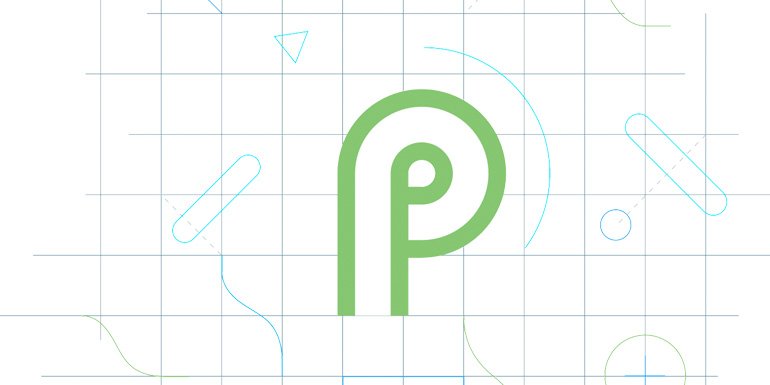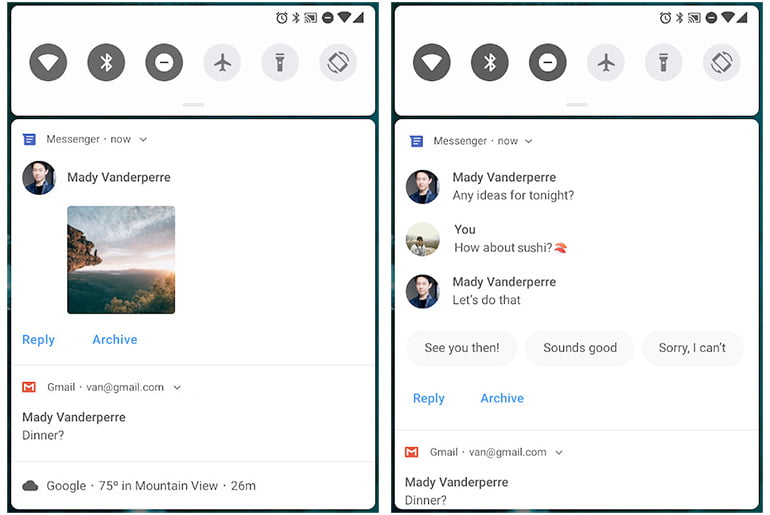The next flavor of Android, the Android P is now available for developers to take a bite. Yes, Google has finally released the first developer preview for Android 9.0 aka Android P. So let us see some of the great features and capabilities that gives flavor to it.
Indoor Positioning with Wi-Fi RTT
Your device can now locate itself indoors with the help of nearby WiFi Access Points. This works with the help of round trip time(RTT) estimation and signal triangulation. For this purpose, Android P has added platform support for the IEEE 802.11mc WiFi protocol. Implementing this feature will help you to issue location based commands inside a building. For example, you can say ‘Turn this light ON’ instead of saying ‘Turn a particular light ON’, when you are near it.

Display cutout support
Android P is getting the iPhone notch, but hey it isn’t something that Apple patented. This feature will help android apps to utilize edge-to-edge screens of latest devices. These cutouts can be simulated from developer options on a device or on the emulator for testing purpose. We are yet to see the benefit of display cutouts for applications with immersive contents.
Notifications
The notifications in Android P has gone lots of changes and you can perform several actions from the notification itself. Below are some of the updates to the notifications in Android 9.
- It can now displays images in Messaging Notifications on phones.
- Display information of the conversation participants in Messaging.
- Messaging experience is improved with smart reply, drafting etc.
- Settings for notification channels like block, new intent, DND priority.

Multi-camera Support and Updates
Devices with either dual-front or dual back cameras can now access simultaneous streams from the dual-cams. With this update, it is now possible for innovative features like seamless zoom, bokeh, and stereo vision. Android P has also enabled the support for external USB/UVC cameras. The new camera API also allows display based flash support and access to OIS time for app-level image stabilization and special effects.
ImageDecoder for bitmaps and drawables
Android P introduces ImageDecoder for decoding images, adding post processing effects and animations. Developers are requested to use the ImageDecoder instead of BitmapFactory and BitmapFactory.Options APIs. ImageDecoder lets you create a Drawable or a Bitmap from a byte buffer, a file, or a URI.
More Features and API Improvements
The following are some of the features and API improvements introduced or improved starting with Android P. However the current version is just a baseline build and Google I/O in May will unwrap more features.
- HDR VP9 Video, HEIF image compression, and Media APIs: Built-in support for HDR enabled movies, support for HEIF image format which is the alternative for JPEG with more compression, Mediaplayer2 and improved media metrics
- Data cost sensitivity in JobScheduler: Better handling of network related jobs with the help network status signals like congested or unmetered.
- Neural Networks API 1.1: Android P expands this API adding nine new ops – Pad, BatchToSpaceND, SpaceToBatchND, Transpose, Strided Slice, Mean, Div, Sub, and Squeeze.
- Autofill framework: Multiple improvements to the existing API for enhancing user experience in filling out in-app and other forms.
- Security enhancements: Unified fingerprint authentication dialog and high-assurance user confirmation of sensitive transactions.
- Client-side encryption of Android backups: Encryption for Android backups with device side key and you need the user PIN, pattern, or password for data restoration.
- Accessibility: Android P added more actions, attributes, and methods to this framework for enhancing accessibility services. Improvements in in-app menu and screen navigation for accessibility apps like screen reader. Accessibility service can now read in-app tooltips, perform device lock and take screenshots on users behalf. The framework can also detect redraws of multiple windows and UI changes of an app.
Conclusion
Definitely the Android P is going to be more powerful and feature rich than its predecessors. If you are interested to get into the details visit Android P Developer Preview. The Android P isn’t yet ready for daily use, so we might have wait longer to enroll for the Beta builds. Meanwhile you can start guessing the names for Android P and comment below. Hope the article was informative, Peace!


